Camber Sands deaths: Lifeguards to patrol over bank holiday
- Published
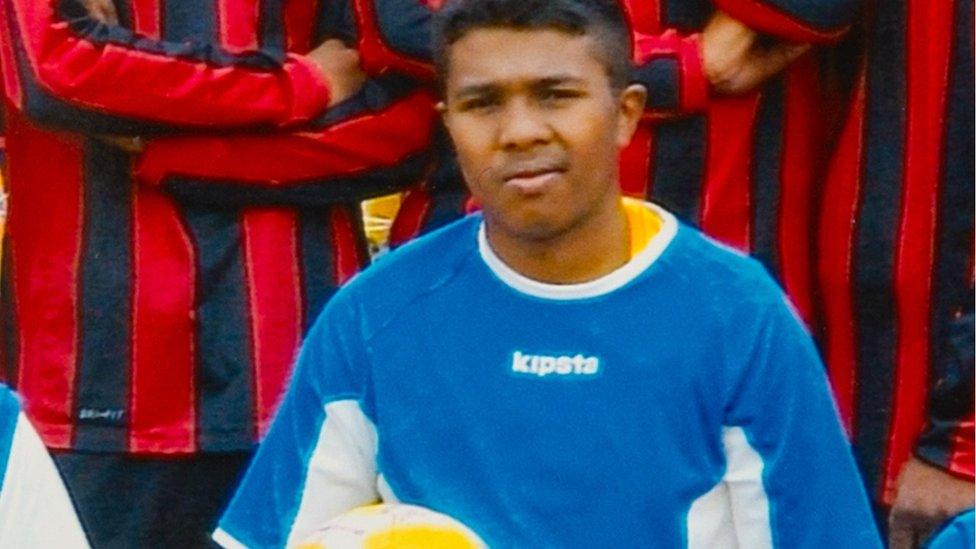
Nitharsan Ravi's family say the beach should have been closed
Lifeguards are to be deployed over the bank holiday weekend at Camber Sands, where five friends died during a day trip to the coast.
Rother District Council said the temporary RNLI lifeguard service would "reassure the public and advise on safety" at the East Sussex beach.
It follows the deaths on Wednesday of the five men in their teens and 20s from south-east London.
Relatives have criticised the lack of lifeguards at Camber.
The men who died have been named by police as:
Kenugen Saththiyanathan, 18, from Erith
Kobikanthan Saththiyanathan 22, from Erith
Nitharsan Ravi, 22, from Plumstead
Inthushan Sriskantharaja, 23, from Grays
Gurushanth Srithavarajah, 27, from Welling
Last month, 19-year-old Brazilian Gustavo Silva Da Cruz also died while swimming in the sea at Camber.

The beach was cleared after the bodies were recovered and the public were asked to stay away
Rother councillor Sally-Ann Hart said safety was under constant review but Camber had been categorised as a safe beach.
"Having said that, the RNLI are providing a temporary service this weekend.
"They are redeploying services from other beaches around the country to provide reassurance to visitors and holidaymakers in view of the recent tragedies, because they are horrendous.
"It might well be that lifeguards may be deployed in the future when all the evidence is looked at as to what caused these deaths."
Who are the RNLI's lifeguards?
Rother council previously said that beach patrols were on duty to advise beachgoers of potential dangers.
But Mr Ravi's sister Mayura, 17, said the family was angry the stretch of beach where the men died had not been blocked off following Mr Da Cruz's death.
Mr Ravi's brother Ajirthan, 19, said: "There weren't any lifeguards cruising around.
"Because they would have quickly noticed these boys drowning, and could have at least save their lives."
An online petition calling for lifeguards at Camber Sands has been signed by more than 7,000 people.
The RNLI said the council had accepted its offer to provide five or six lifeguards on Saturday, Sunday and Monday between 09:00 and 18:00 BST who would work alongside the Rother beach patrols.
The charity has said the five men could have got into trouble after failing to realise how quickly the tide would come in.
It said it believed all five men fell into deep channels of water between sand-bars - mounds of sand created by wave and tide activity - which had been made deeper with the weekend storms.


What are sand-bars?
A sand-bar is a submerged or partly exposed ridge of sand or other sediment built up by currents in coastal waters that occur where waves break.
They are usually made up of sand but can also involve other granular materials, such as shingle or even boulders.
They are most pronounced in the heavy surf caused by storms.
Sand-bars are the most common cause of rip currents, which are generated by waves breaking over them.
The RNLI said that the sand-bars at Camber Sands were three feet deep and had been made deeper by the weekend storms. Satellite images of the area give an idea of how the sandbars create an uneven sea floor.
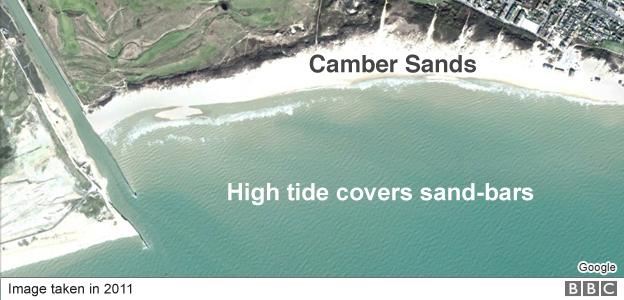


- Published25 August 2016

- Published25 August 2016
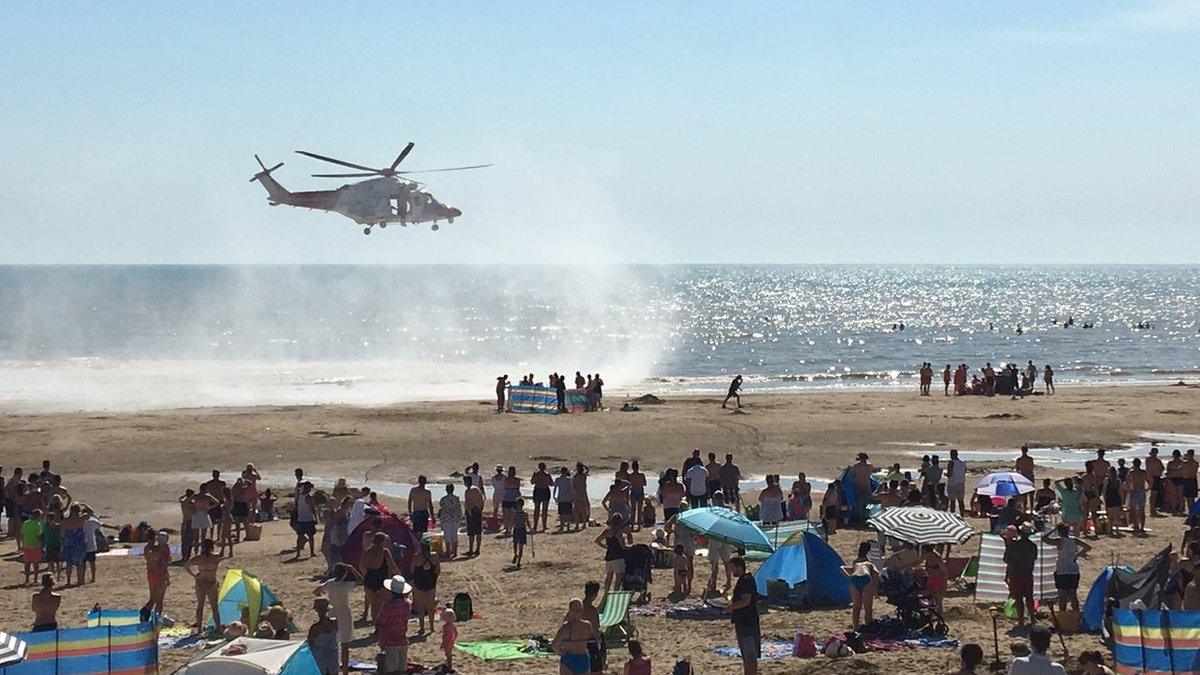
- Published25 August 2016
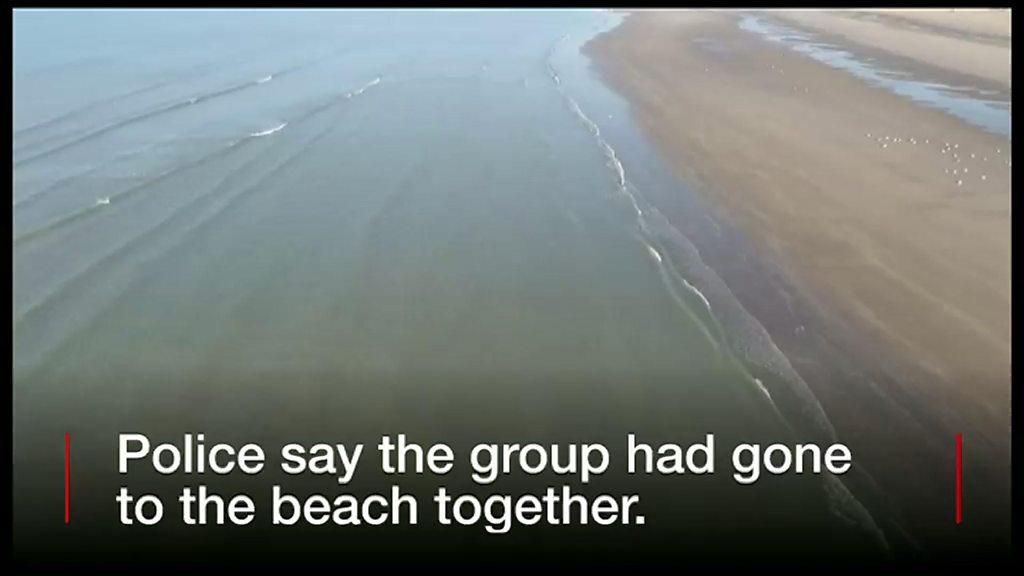
- Published24 August 2016

- Published25 August 2016
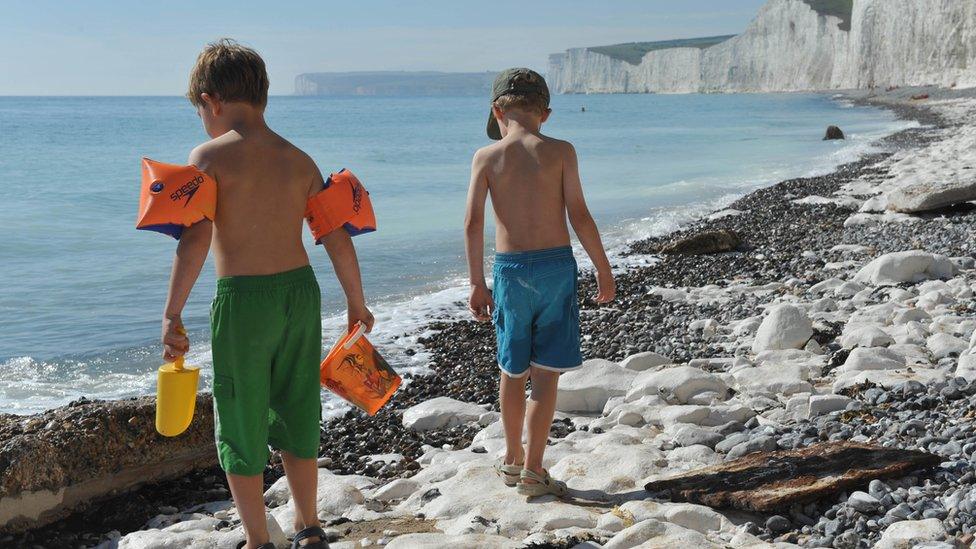
- Published22 August 2016
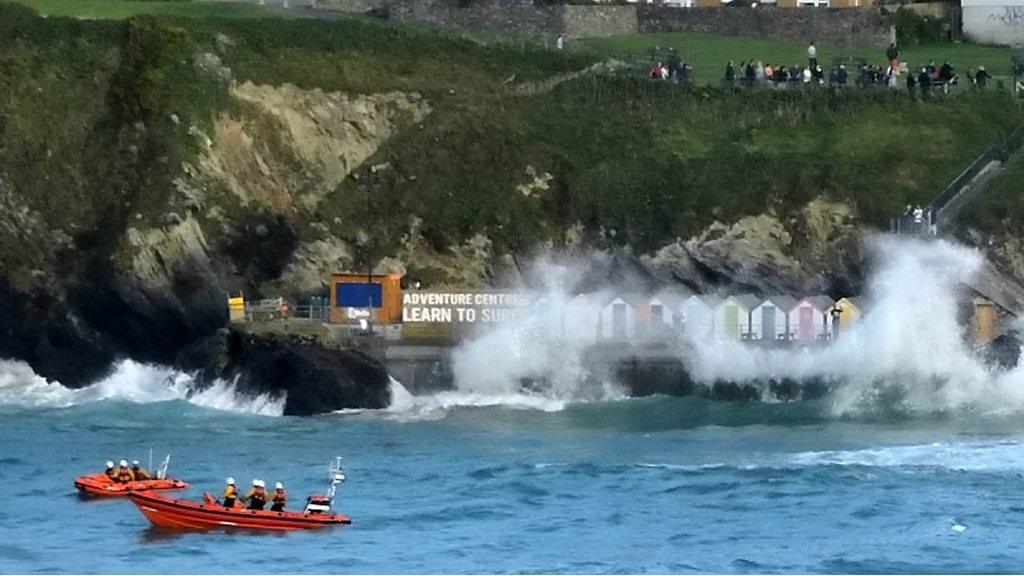
- Published25 July 2016
